Look at the list of Plants that Resemble Marsh Marigold; these lookalikes can be invasive and destructive. Find the differences in this post.
The marsh marigold plant (Caltha palustris) grows across various regions of the United States. They exhibit abundant blooms in the early spring. Despite its common name causing confusion, marsh marigolds are distinct from well-known garden marigold varieties like Calendula and Tagetes. While resembling other wild plants, marsh marigolds stand apart in their own right. This post will guide you about Plants that Resemble Marsh Marigold and which are the most harmful among them.
Read: Plants that Resemble Poison Ivy with Three Leaves
Marsh Marigold Information
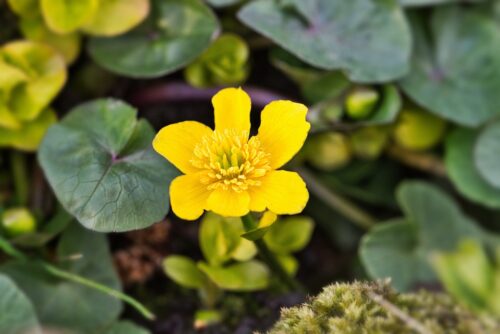
Swamp or marsh marigolds are famous for their glossy, heart-shaped leaves and colorful flowers. In favorable conditions, these small plants can spread and create large groups. They usually grow in wet places like swamps, by ditches, near rivers, and in low areas.
Like many similar-looking plants, swamp marigolds can be harmful if eaten. Let’s take a closer look at some other plants often confused with swamp marigolds and learn how to tell them apart.
Plants that Resemble Marsh Marigold
1. Hypoxis hirsuta
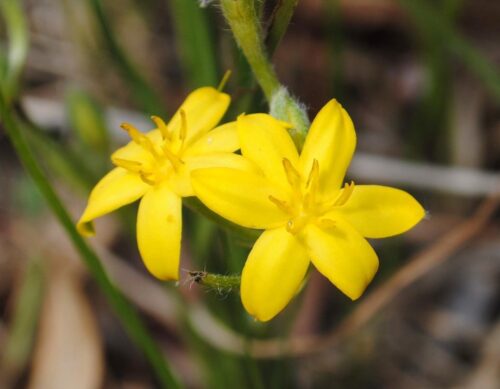
Another native plant, Hypoxis hirsuta, is a small flower that often grows in fields and near partially wooded areas. Its short, grass-like leaves are easy to overlook until the plant starts flowering. When it blooms, it produces attractive yellow star-shaped flowers that pollinators love. While it can spread in favorable conditions, it’s not usually considered invasive.
2. Ficaria verna

While swamp marigold plants can spread, they’re typically not seen as invasive in many areas. However, the same can’t be said for Ficaria verna, also known as lesser celandine. Once established, lesser celandine spreads rapidly, forming dense mats that can outcompete native plants. Although its leaves look similar to marsh marigolds, the flowers are slightly different. Experts recommend avoiding planting lesser celandine in gardens as it can easily escape and take over areas beyond borders and beds.
3. Ranunculus acris
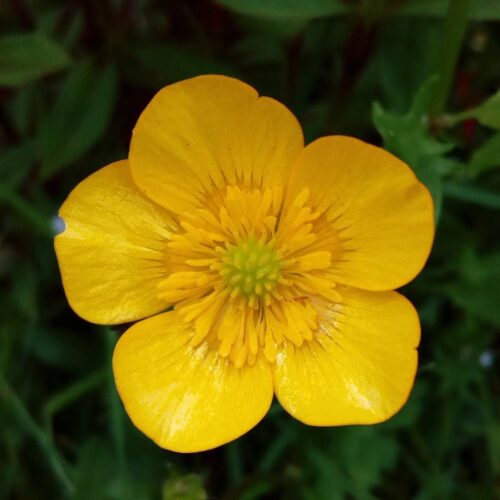
Both Ranunculus acris and marsh marigold are classified as true buttercup species. However, there are several ways to tell them apart. While both have bright yellow flowers, their appearance and growth habits differ significantly. Meadow buttercup, also known as acris, forms clumps of serrated, fern-like leaves. In spring, it produces flowers on tall, slender stems, distinct from marsh marigolds. These toxic plants are sometimes invasive and may need chemical or manual methods to manage their spread.
4. Geum radiatum
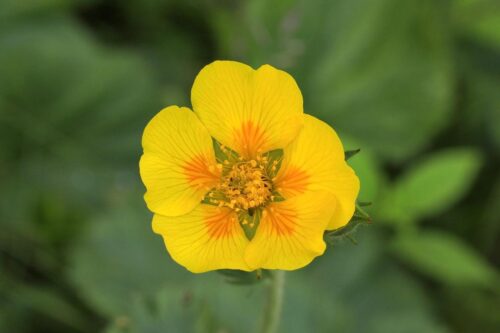
Geum radiatum, also called Appalachian avens, is native to specific parts of the United States. These plants mainly grow near cliffs or rocky areas on mountaintops. Unfortunately, they’ve become increasingly scarce in recent years and are now considered endangered in many regions.
5. Chrysogonum virginianum
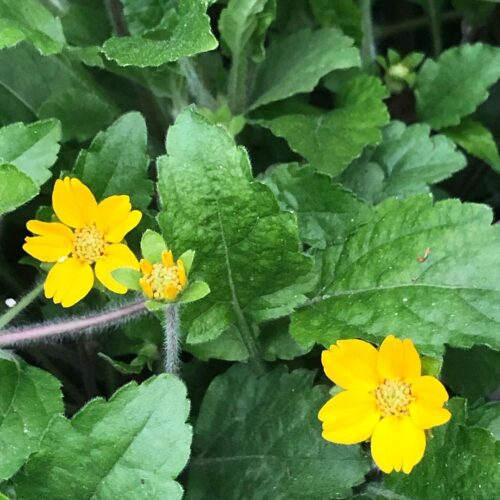
Chrysogonum virginianum, also called “green and gold,” is a perennial plant native to the United States, able to withstand USDA zones 5-9. It’s often used as ground cover in home gardens. These plants do best in well-draining soil and prefer shade during the hottest times of the day. In their natural habitat, you can find green and gold growing in clearings or near wooded areas.
Read: Indoor Plants that Resemble Watermelons
Are Marsh Marigold Plants Harmful?
Marsh marigold plants are harmful to both humans and animals. They belong to the Ranunculaceae family and contain a substance called protoanemonin. People who want to grow these plants should be careful, especially if there are children or pets around. Handling them can cause skin irritation or rash.
Read: Poisonous Plants That Look Like Lambsquarters
Which Marsh Marigold Lookalikes Are Most Harmful
Gardeners might want to grow plants that spread fast, but it’s important to avoid ones that can be invasive. Before planting anything, it’s smart to check local rules and talk to agriculture experts. They can help decide what’s best. Be careful not to plant marsh marigold lookalikes like Ranunculus acris and Ficaria verna in your garden.



